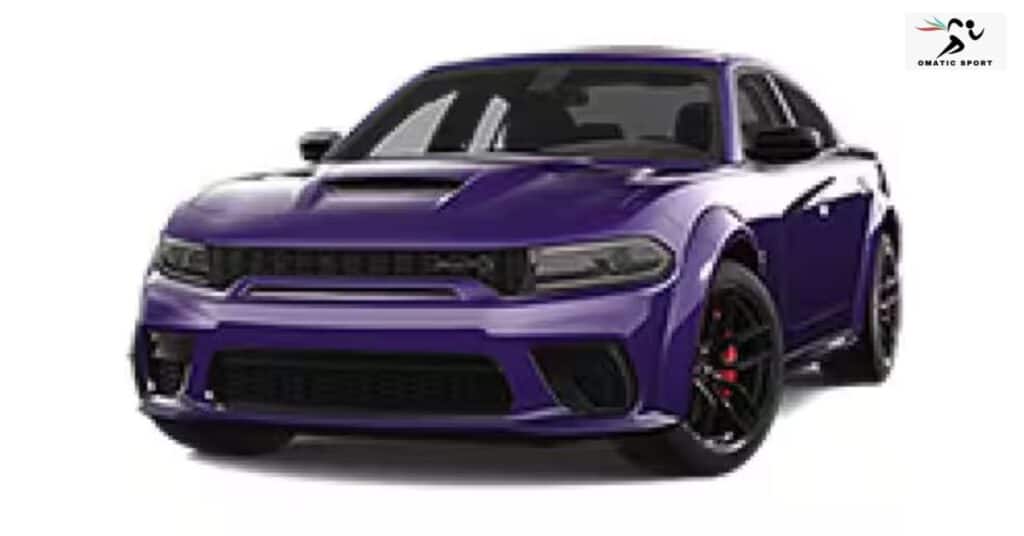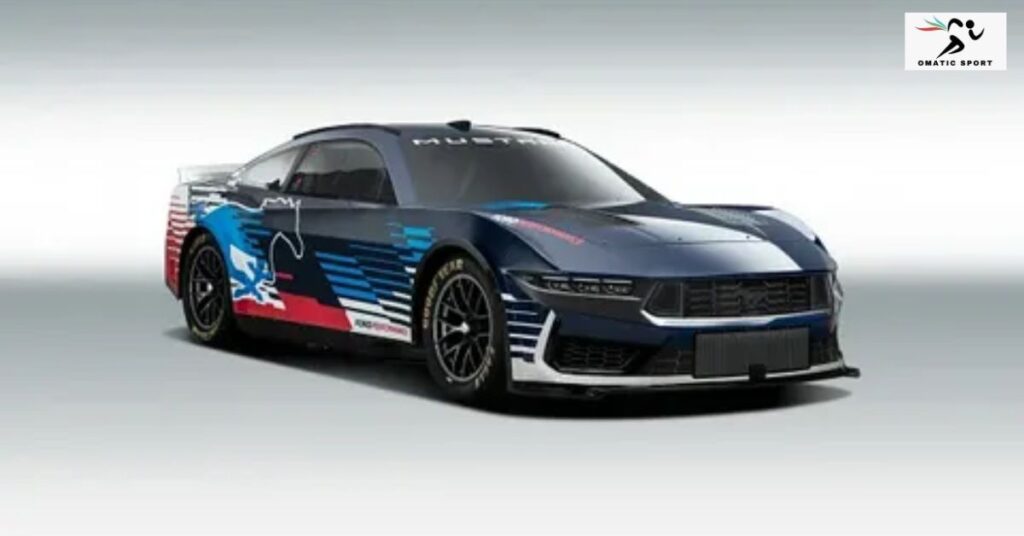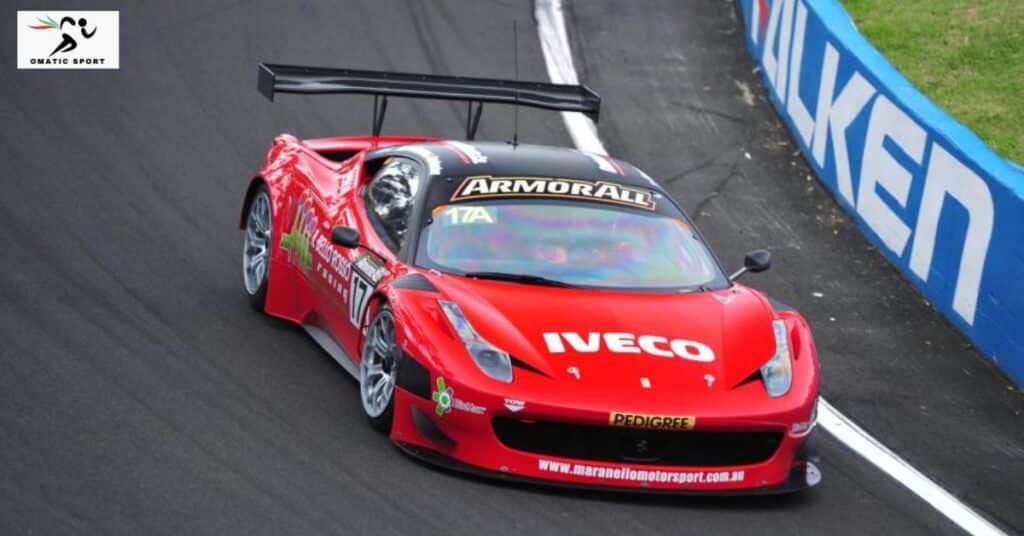From the rumble of a V8 to the sleek lines that cut through the air, American sports cars have captured hearts and imaginations for decades. These four-wheeled icons are not just vehicles; they are a testament to American ingenuity, power, and style. Let’s dive into the rich history and exciting future of these magnificent machines.
The Heart of American Automotive Cars 2024
American sports cars are more than just fast vehicles. They are the beating heart of U.S. car culture. Since the 1950s, these speed demons have been turning heads and setting trends, not just on American roads, but across the globe.
The story of American sports cars is one of innovation, competition, and pure, unbridled power. It’s a tale that begins with the dreams of visionary designers and engineers, evolves through decades of technological advances, and continues to push the boundaries of what’s possible on four wheels.
“The American sports car is a symphony of power, style, and freedom a rolling tribute to the American spirit.” Carroll Shelby
Laying the Groundwork (1950s-1960s)
America’s Sports Car
The Chevrolet Corvette, introduced in 1953, was America’s answer to the European sports cars dominating the market. With its fiberglass body and sleek design, the ‘Vette quickly became an icon.
- First Generation (C1): 1953-1962
- Notable Feature: First mass-produced car with a fiberglass body
- Impact: Established America as a serious player in the sports car market
Personal Luxury Meets Performance
While not a pure sports car, the Thunderbird, launched in 1955, blended performance with luxury, creating a new “personal luxury car” segment.
- Engine: Initially offered with a 292 cu in (4.8 L) Y-block V8
- Sales: Outsold the Corvette in its early years
- Legacy: Influenced the design of future American luxury performance cars
Anglo-American Hybrid that Shook the World
Carroll Shelby’s brainchild, the Shelby Cobra, combined a lightweight British AC Ace chassis with a powerful Ford V8 engine.
- Top Speed: 186 mph (in the 427 Cobra)
- Racing Success: Won the GT class at Le Mans in 1964
- Production: Only 998 original Cobras were built between 1961 and 1968
| Model | Engine | Power Output | 0-60 mph |
| 260 Cobra | 4.3L V8 | 260 hp | 5.5 sec |
| 289 Cobra | 4.7L V8 | 306 hp | 5.3 sec |
| 427 Cobra | 7.0L V8 | 425 hp | 4.2 sec |
The Golden Age of Muscle (1960s-1970s)
The 1960s and early 1970s saw the rise of the muscle car era, a uniquely American phenomenon that emphasized raw power and straight-line speed.
The Pony Car Revolution in American sports cars

Launched in 1964, the Mustang created an entirely new car category – the pony car. It combined sports car styling with affordability and practicality.
- First Year Sales: Over 400,000 units
- Iconic Models: Shelby GT350, Mach 1, Boss 302
- Cultural Impact: Featured in numerous films, including “Bullitt” (1968)
Chevrolet Camaro: Chevy’s Answer to the Mustang
Introduced in 1967, the Camaro was Chevrolet’s entry into the pony car market, sparking a rivalry with the Mustang that continues to this day.
- First Generation: 1967-1969
- Powerful Variants: Z/28, SS
- Racing Pedigree: Dominated the Trans Am racing series
Mopar’s Muscle Machine in American sports cars

Arriving late to the pony car party in 1970, the Challenger made up for lost time with aggressive styling and powerful engines.
- Engine Options: Ranged from a 225 cu in (3.7 L) I6 to a 426 cu in (7.0 L) Hemi V8
- Rarest Model: 1970 Challenger R/T convertible with Hemi engine (only 9 produced)
- Modern Revival: Reintroduced in 2008, continuing the muscle car legacy
The Dark Ages and Renaissance (1970s-1990s)
The 1970s brought challenges to the American sports car industry, but it also set the stage for a remarkable comeback.
Impact of Oil Crisis and Emissions Regulations
- Fuel Shortages: Led to a shift towards smaller, more fuel-efficient cars
- Emissions Standards: Forced manufacturers to detune high-performance engines
- Market Shift: Many iconic muscle cars were discontinued or neutered
Chevrolet Corvette C4: Reigniting the Flame
The fourth-generation Corvette, introduced in 1984, marked a return to form for American sports cars.
- Digital Dashboard: One of the first cars to feature a fully digital instrument cluster
- Performance: 0-60 mph in 5.6 seconds (1984 model)
- ZR-1 Variant: Nicknamed “King of the Hill,” with a Lotus-designed LT5 engine
Dodge Viper: Raw Power Returns
Launched in 1992, the Viper was a no-compromises sports car that rekindled the spirit of the Shelby Cobra.
- Engine: 8.0L V10 producing 400 hp
- Design: Penned by Tom Gale, inspired by classic roadsters
- Performance: 0-60 mph in 4.6 seconds, top speed of 165 mph (1st gen)
Turn of the Millennium (2000s-2010s)
The new millennium brought a renaissance for American sports cars, blending classic muscle with cutting-edge technology.
Ford GT: Homage to Le Mans Legacy
Introduced in 2005, the Ford GT paid tribute to the legendary GT40 while offering modern supercar performance.
- Production Run: Only 4,038 units produced from 2005-2006
- Engine: 5.4L supercharged V8 producing 550 hp
- Performance: 0-60 mph in 3.3 seconds, top speed of 205 mph
Chevrolet Corvette C6 and C7: Refining the Formula
The sixth and seventh-generation Corvettes continued to evolve the brand, offering world-class performance at a fraction of the cost of European exotics.
C6 (2005-2013):
- Z06 Variant: 7.0L LS7 V8 with 505 hp
- ZR1 Variant: Supercharged 6.2L LS9 V8 with 638 hp
C7 (2014-2019):
- Stingray: Reintroduced the iconic Stingray name
- Z06: 650 hp supercharged LT4 engine
- ZR1: 755 hp, making it the most powerful production Corvette to date
Cadillac CTS-V: Luxury Meets Lunacy
Cadillac’s entry into the high-performance luxury sedan market proved that American cars could compete with the best from Germany.
- First Generation (2004-2007): 400 hp LS6 V8
- Second Generation (2009-2015): 556 hp supercharged LSA V8
- Third Generation (2016-2019): 640 hp supercharged LT4 V8
“The CTS-V is like a Corvette with a tuxedo and a PhD.” – Motor Trend
The Hyper card Era: Pushing Boundaries (2010s-Present)
In recent years, American manufacturers have set their sights on the ultimate prize – the title of world’s fastest production car.
Hennessey Venom GT: Texas-sized Speed
Based on a modified Lotus Exige chassis, the Venom GT showcased American ingenuity and brute force.
- Engine: 7.0L twin-turbocharged V8 producing 1,244 hp
- Top Speed: 270.49 mph (unofficial world record in 2014)
- Production: Only 13 units produced
SSC Tuatara: Chasing the Speed Record
The successor to the SSC Ultimate Aero, the Tuatara aims to reclaim the production car speed record for America.
- Engine: 5.9L twin-turbocharged V8 producing up to 1,750 hp on E85 fuel
- Claimed Top Speed: Over 300 mph
- Design: Ultra-low drag coefficient of 0.279
Ford GT (2nd Gen): Race Car for the Road

Launched in 2017, the second-generation Ford GT is a technological tour de force.
- Engine: 3.5L twin-turbocharged EcoBoost V6 producing 647 hp
- Body: Carbon fiber monocoque with aluminum subframes
- Racing Success: Class win at the 2016 24 Hours of Le Mans
Electric Revolution: The Future of American sports cars
As the automotive world shifts towards electrification, American sports car manufacturers are leading the charge.
Tesla Roadster: Silicon Valley Disruption
The original Tesla Roadster proved that electric cars could be fast and desirable.
- First Generation (2008-2012):
- 0-60 mph: 3.7 seconds
- Range: 244 miles
- Upcoming Second Generation:
- Claimed 0-60 mph: Under 1.9 seconds
- Claimed top speed: Over 250 mph
GMC Hummer EV: Reinventing an Icon
The electric Hummer proves that American muscle can thrive in the electric era.
- Power: Up to 1,000 hp in tri-motor configuration
- Range: Estimated 350+ miles
- Feature: “Crab Walk” diagonal steering mode
Upcoming Electric American sports cars from Traditional Manufacturers
- Electric Corvette: Rumored to be in development
- Ford Mustang Mach-E GT: High-performance electric SUV with Mustang styling cues
- Dodge Electric Muscle Car: Promised to maintain the brand’s performance heritage
Cult Classics and Limited Editions
Beyond the mainstream, America has produced some truly unique and collectible sports cars.
Saleen S7: America’s First Supercar
Produced from 2000 to 2009, the Saleen S7 was a hand-built supercar that could compete with the best from Europe.
- Engine: 7.0L V8, up to 1,000 hp in twin-turbo form
- Performance: 0-60 mph in 2.8 seconds, top speed of 248 mph (twin-turbo)
- Racing Success: Won multiple championships in international GT racing
Panoz Esperante: Boutique Beauty
This hand-built sports car from Georgia combined classic styling with modern performance.
- Production: 1997-2007
- Engine Options: Ford-sourced V8s, including supercharged variants
- Racing Variant: Esperante GTLM, class winner at the 24 Hours of Le Mans
Vector W8: The Wedge that Could
This ambitious supercar project of the 1980s and early 1990s showcased radical design and advanced technology.
- Engine: Twin-turbocharged 6.0L V8 producing 625 hp
- Construction: Aerospace-inspired carbon fiber and Kevlar body
- Production: Only 17 units built between 1989 and 1993
Racing Pedigree: From Street to Track

American sports cars have a rich history in motorsports, proving their mettle against the world’s best.
Corvette Racing: Dominating Le Mans
- Class Wins: 8 victories in the GTE Pro/GT1 class at the 24 Hours of Le Mans
- Notable Achievement: 100th victory in IMSA competition in 2016
- Current Model: C8.R, based on the mid-engine Corvette
Ford GT40 and Modern GT: Legendary Le Mans Victories
- 1960s Dominance: Four consecutive overall wins at Le Mans from 1966-1969
- Modern Success: Class win at Le Mans in 2016, 50 years after the original GT40’s first victory
Trans Am Series: Breeding Ground for Icons
- Golden Era: Late 1960s to early 1970s
- Iconic Cars: Chevrolet Camaro Z/28, Ford Mustang Boss 302, AMC Javelin
- Legacy: Influenced the development of production sports cars and pony cars
Cultural Impact and Legacy
American sports cars have left an indelible mark on popular culture, inspiring generations of enthusiasts.
- Music: Featured in countless songs, from The Beach Boys’ “Fun, Fun, Fun” to Prince’s “Little Red Corvette”
- Film: Starred in movies like “Bullitt,” “Gone in 60 Seconds,” and “Ford v Ferrari”
- Television: Central to shows like “Knight Rider” and “The Dukes of Hazzard”
Car Shows and Enthusiast Communities
- Major Events: Woodward Dream Cruise, Hot Rod Power Tour, SEMA Show
- Online Forums: Thriving communities for every make and model
- Car Clubs: Nationwide organizations dedicated to specific models or brands
Collector Market and Value Appreciation
Some American sports cars have become valuable collector’s items, appreciating significantly over time.
Top 5 Most Valuable American Sports Cars (as of 2023):
- 1967 Chevrolet Corvette L88 Coupe: $3.85 million
- 1967 Shelby Cobra 427 S/C: $2.94 million
- 1965 Shelby Daytona Cobra Coupe: $7.25 million
- 1968 Ford GT40 Gulf/Mirage Lightweight: $11 million
- 2017 Ford GT ’66 Heritage Edition: $1.54 million
Conclusion
From the raw power of muscle cars to the cutting-edge technology of modern supercars. American sports cars continue to captivate enthusiasts worldwide. As we look to the future, these icons of speed and style are poised to evolve, embracing electrification and pushing the boundaries of performance.
The story of American sports cars is far from over. With each new model and technological advancement, these machines continue to embody the spirit of innovation, freedom, and the pursuit of speed that has defined them for over seven decades.
Whether you are a die-hard enthusiast or a casual admirer, there’s no denying the impact and allure of American sports cars. They’re not just vehicles; they are rolling pieces of history, testaments to human ingenuity, and above all, dreams made real on four wheels.
As we eagerly anticipate the next chapter in this exciting saga, one thing is certain: the American sports car, in whatever form it takes, will continue to inspire, excite, and push the limits of what’s possible on the open road.

Roman Moris is a skilled writer with expertise in team names and game names. As a member of the Techy Lous team, he blends creativity with a deep understanding of technology, delivering engaging content on the latest innovations in gadgets, AI, and tech trends.

